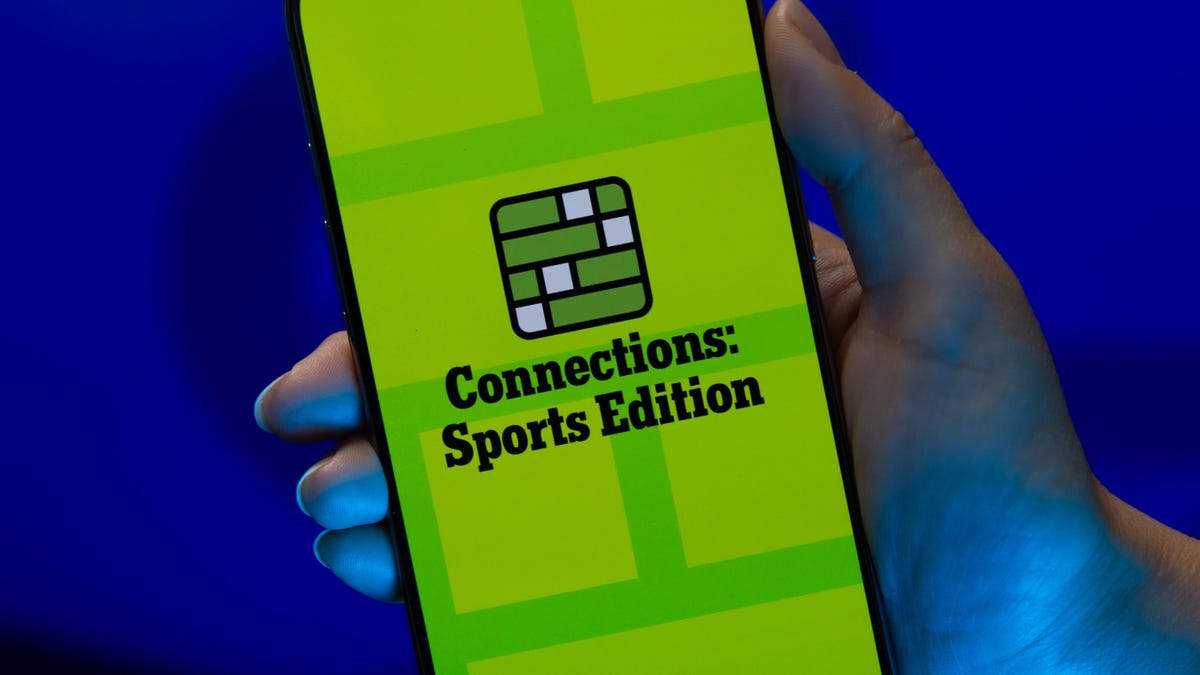Technologies
iPhone 16E vs. iPhone 16: Comparing the Key Specs on Apple’s Phones
The $599 iPhone 16E shares much with the $799 iPhone 16, but key differences remain. Here’s what to know before choosing your next phone.

The $599 iPhone 16E is Apple’s most affordable iPhone, and it shares many features with the $799 iPhone 16. But there are also some sacrifices you’ll need to make for that $200 discount.
While some core components like the A18 chip, iOS 18 and Apple Intelligence are on both devices, there are notable differences across the phones’ cameras, designs and batteries.
Here’s how the iPhone 16E compares to the baseline iPhone 16.
Display and build
The iPhone 16E and iPhone 16 both have a 6.1-inch OLED display with a 60Hz refresh rate. The 16E has a peak brightness of 1,200 nits, while the 16 reaches 2,000 nits. A ceramic shield front and glass back are featured on each phone.
The devices have an aluminum design and are about as heavy as each other, with the iPhone 16E weighing in at 167 grams and the iPhone 16 at 170 grams.
Both phones also have an Action button, but only the iPhone 16 has a Camera Control button. The Dynamic Island feature is also limited to the pricier model. The devices each have an IP68 rating for dust and water resistance.
Apple drops the home button on its new budget phone in favor of Face ID, just like the iPhone 16. Both devices also have a USB-C port, and neither has a headphone jack.
The iPhone 16E comes in black and white, while the iPhone 16 comes in black, white, pink, teal and ultramarine.
Battery and storage
Both the iPhone 16E and 16 come in 128GB, 256GB and 512GB options. Apple boasts that the 16E can get up to 26 hours of video playback and 21 hours of streamed video playback, while the 16 will last for up to 22 hours of video playback and 18 hours of streamed video playback.
One of the reasons behind the cheaper iPhone’s longer battery life is because it runs on Apple’s very first 5G modem, called C1. The company says its C1 modem is the «most power-efficient modem ever in an iPhone» and as a result helps increase the phone’s battery life.
They each support 20-watt wired charging. The iPhone 16E supports 7.5W Qi wireless charging, while the iPhone 16 is capable of 15W Qi2 charging, as well as MagSafe wireless charging up to 25W with a 30W adapter or higher.
Cameras at a glance
You’ll find a 48-megapixel wide camera on both the iPhone 16E and iPhone 16, as well as a 12-megapixel ultrawide camera on the 16. To make up for its lower camera count, the 16E uses sensor cropping to get a 2x magnification for better zoomed-in shots (as does the iPhone 16). Both phones have a 12-megapixel front-facing camera.
You can shoot 4K video at 60 frames per second on each device. On the iPhone 16, you can shoot 1080p spatial video, but only at 30 frames per second.
Apple Intelligence for all
One of the biggest upgrades to Apple’s lower-priced iPhone is the inclusion of Apple Intelligence, which was previously confined to iPhone 15 Pro models and the iPhone 16 lineup. Now you can spend less and still get access to features like a smarter Siri, writing tools and the Clean Up tool in photos.
This move signals Apple’s eagerness to get its AI suite into more people’s hands, and indicates that AI is now a core component of any iPhone, from the cheapest option to the most premium.
Check out the spec chart below for more details on each phone.
Apple iPhone 16E vs. iPhone 16
| Apple iPhone 16E | Apple iPhone 16 | |
|---|---|---|
| Display size, tech, resolution, refresh rate | 6.1-inch Super Retina XDR OLED display; 2,532×1,170 pixels; 60Hz refresh rate | 6.1-inch OLED Super Retina XDR display; 2,556×1,179 pixels; 60Hz refresh rate |
| Pixel density | 460ppi | 460ppi |
| Dimensions (inches) | 5.78×2.82×0.31 | 5.81×2.82×0.31 |
| Dimensions (millimeters) | 146.7×71.5×7.8 | 147.6×71.6×7.8 |
| Weight | 167 grams (5.88 ounces) | 170 grams (6 ounces) |
| Mobile software | iOS 18 | iOS 18 |
| Camera | 48 megapixel (wide) | 48 megapixel (wide), 12 megapixel (ultrawide) |
| Front-facing camera | 12 megapixel | 12 megapixel |
| Video capture | 4K at 60fps | 4K at 60fps; spatial video at 1080p at 30fps |
| Processor | A18 | A18 |
| RAM/storage | 128GB, 256GB, 512GB | 128GB, 256GB, 512GB |
| Expandable storage | No | No |
| Battery | Up to 26 hours video playback, 21 hours streamed video playback, 90 hours of audio playback. 20-watt wired charging, 7.5-watt Qi wireless charging | Up to 22 hours video playback; up to 18 hours video playback (streamed). 20-watt wired charging. MagSafe wireless charging up to 25 watts with 30-watt adapter or higher; Qi2 up to 15 watts |
| Fingerprint sensor | None (Face ID) | None (Face ID) |
| Connector | USB-C | USB-C |
| Headphone jack | No | No |
| Special features | Action button, Apple C1 5G modem, Apple Intelligence, Ceramic Shield, Emergency SOS, satellite connectivity, IP68 resistance. Colors: black and white. | Apple Intelligence, Action button, Camera Control button, Dynamic Island, 1 to 2,000 nits display brightness range, IP68 resistance, Ceramic Shield. Colors: black, white, pink, teal, ultramarine. |
| US price starts at | $599 (128GB), $699 (256GB), $899 (512GB) | $799 (128GB), $899 (256GB), $1,099 (512GB) |
| UK price starts at | £599 (128GB), £699 (256GB), £899 (512GB) | £799 (128GB), £899 (256GB), £1,099 (512GB) |
| Australia price starts at | AU$999 (128GB), AU$1,199 (256GB), AU$1,549 (512GB) | AU$1,399 (128GB), AU$1,599 (256GB), AU$1,949 (512GB) |
Technologies
Today’s NYT Mini Crossword Answers for Friday, Dec. 26
Here are the answers for The New York Times Mini Crossword for Dec. 26.

Looking for the most recent Mini Crossword answer? Click here for today’s Mini Crossword hints, as well as our daily answers and hints for The New York Times Wordle, Strands, Connections and Connections: Sports Edition puzzles.
Need some help with today’s Mini Crossword? Some of the clues are tough today — I thought maybe 1-Across was referring to the Grinch, or even Oscar the Grouch, but was I ever wrong! Read on for all the answers. And if you could use some hints and guidance for daily solving, check out our Mini Crossword tips.
If you’re looking for today’s Wordle, Connections, Connections: Sports Edition and Strands answers, you can visit CNET’s NYT puzzle hints page.
Read more: Tips and Tricks for Solving The New York Times Mini Crossword
Let’s get to those Mini Crossword clues and answers.
Mini across clues and answers
1A clue: Furry and green, say
Answer: MOSSY
6A clue: State known for its potatoes
Answer: IDAHO
7A clue: Like a faithful friend
Answer: LOYAL
8A clue: Had a beverage
Answer: DRANK
9A clue: Pronoun frequently paired with «her»
Answer: SHE
Mini down clues and answers
1D clue: Not spicy, as salsa
Answer: MILD
2D clue: Reasons for wrinkled noses
Answer: ODORS
3D clue: Words from a doctor checking your tonsils
Answer: SAYAH
4D clue: Comedian Gillis
Answer: SHANE
5D clue: Part of an egg used to make hollandaise sauce
Answer: YOLK
Don’t miss any of our unbiased tech content and lab-based reviews. Add CNET as a preferred Google source.
Technologies
Today’s NYT Connections: Sports Edition Hints and Answers for Dec. 26, #459
Here are hints and the answers for the NYT Connections: Sports Edition puzzle for Dec. 26, No. 459.

Looking for the most recent regular Connections answers? Click here for today’s Connections hints, as well as our daily answers and hints for The New York Times Mini Crossword, Wordle and Strands puzzles.
Today’s Connections: Sports Edition is a tough one. That purple category once again has players looking for a different, but related, hidden word in four of the clues. If you’re struggling with today’s puzzle but still want to solve it, read on for hints and the answers.
Connections: Sports Edition is published by The Athletic, the subscription-based sports journalism site owned by The Times. It doesn’t appear in the NYT Games app, but it does in The Athletic’s own app. Or you can play it for free online.
Read more: NYT Connections: Sports Edition Puzzle Comes Out of Beta
Hints for today’s Connections: Sports Edition groups
Here are four hints for the groupings in today’s Connections: Sports Edition puzzle, ranked from the easiest yellow group to the tough (and sometimes bizarre) purple group.
Yellow group hint: Big Apple jock.
Green group hint: College football fun.
Blue group hint: On the road.
Purple group hint: Hunt down a word in other words.
Answers for today’s Connections: Sports Edition groups
Yellow group: A New York athlete.
Green group: Bowl games.
Blue group: Associated with a team road trip.
Purple group: Ends in a movement verb.
Read more: Wordle Cheat Sheet: Here Are the Most Popular Letters Used in English Words
What are today’s Connections: Sports Edition answers?
The yellow words in today’s Connections
The theme is a New York athlete. The four answers are Islander, Net, Ranger and Yankee.
The green words in today’s Connections
The theme is bowl games. The four answers are Alamo, Gator, Liberty and Pinstripe.
The blue words in today’s Connections
The theme is associated with a team road trip. The four answers are bus, flight, hotel and visiting locker room.
The purple words in today’s Connections
The theme is ends in a movement verb. The four answers are foxtrot (trot), newsprint (sprint), terrace (race) and thunderbolt (bolt).
Don’t miss any of our unbiased tech content and lab-based reviews. Add CNET as a preferred Google source.
Technologies
Today’s NYT Connections Hints, Answers and Help for Dec. 26, #929
Here are some hints and the answers for the NYT Connections puzzle for Dec. 26 #929

Looking for the most recent Connections answers? Click here for today’s Connections hints, as well as our daily answers and hints for The New York Times Mini Crossword, Wordle, Connections: Sports Edition and Strands puzzles.
Today’s NYT Connections puzzle is full of fun pop-culture references. Read on for clues and today’s Connections answers.
The Times has a Connections Bot, like the one for Wordle. Go there after you play to receive a numeric score and to have the program analyze your answers. Players who are registered with the Times Games section can now nerd out by following their progress, including the number of puzzles completed, win rate, number of times they nabbed a perfect score and their win streak.
Read more: Hints, Tips and Strategies to Help You Win at NYT Connections Every Time
Hints for today’s Connections groups
Here are four hints for the groupings in today’s Connections puzzle, ranked from the easiest yellow group to the tough (and sometimes bizarre) purple group.
Yellow group hint: Golden state cliches.
Green group hint: Funny films.
Blue group hint: Rock on.
Purple group hint: Not white.
Answers for today’s Connections groups
Yellow group: California-based character tropes.
Green group: Comedy subgenres.
Blue group: ’70s rock bands.
Purple group: Black ____.
Read more: Wordle Cheat Sheet: Here Are the Most Popular Letters Used in English Words
What are today’s Connections answers?
The yellow words in today’s Connections
The theme is California-based character tropes. The four answers are movie exec, surfer, tech bro and Valley Girl.
The green words in today’s Connections
The theme is comedy subgenres. The four answers are buddy, cringe, screwball and stoner.
The blue words in today’s Connections
The theme is ’70s rock bands. The four answers are America, Chicago, Foreigner and Journey.
The purple words in today’s Connections
The theme is black ____. The four answers are Forest, Friday, Panther and Widow.
Don’t miss any of our unbiased tech content and lab-based reviews. Add CNET as a preferred Google source.
-

 Technologies3 года ago
Technologies3 года agoTech Companies Need to Be Held Accountable for Security, Experts Say
-

 Technologies3 года ago
Technologies3 года agoBest Handheld Game Console in 2023
-

 Technologies3 года ago
Technologies3 года agoTighten Up Your VR Game With the Best Head Straps for Quest 2
-

 Technologies4 года ago
Technologies4 года agoBlack Friday 2021: The best deals on TVs, headphones, kitchenware, and more
-

 Technologies4 года ago
Technologies4 года agoVerum, Wickr and Threema: next generation secured messengers
-

 Technologies4 года ago
Technologies4 года agoGoogle to require vaccinations as Silicon Valley rethinks return-to-office policies
-

 Technologies4 года ago
Technologies4 года agoOlivia Harlan Dekker for Verum Messenger
-

 Technologies4 года ago
Technologies4 года agoiPhone 13 event: How to watch Apple’s big announcement tomorrow
